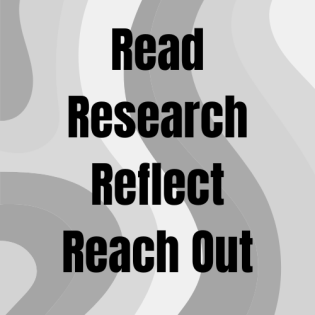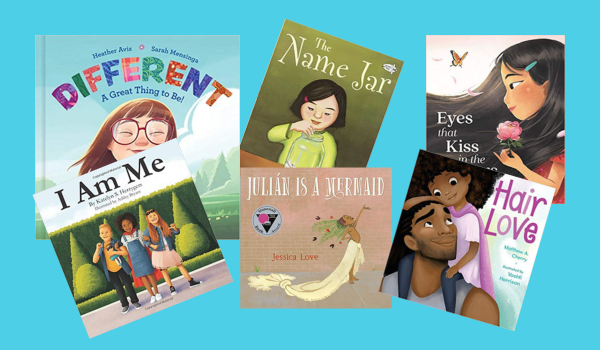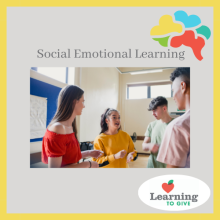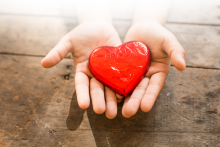Identity Journey
In this activity, you can explore the importance of your identity in a personal journey to use your gifts to create a better world.
There is strength in being me. I have gifts to share for a better world.
If someone asked you, Who are you?, how would you answer? What does it mean to be you? Follow the steps of discovery below about what makes up your identity and how you can use your gifts for good. You will need a journal for taking notes as you go.Note: If you are a parent, teacher, youth leader or someone who will lead others through this activity, complete the activity yourself for a better understanding of what others may experience.
Read, Research, Reflect, Reach Out
Read
Books are a great way to explore and discuss big ideas. Start this exploration of identity by reading a variety of picture books that celebrate qualities and characteristics of each unique individual. Write in a journal your thoughts, ideas, and questions that come up or stand out as you read. Picture books provide wisdom and creativity that is not just for young children.
What ideas and thoughts describe your identity?
Begin with A Kids Book About Identity by Taboo (from the Black-Eyed Peas). You can find a version of the book read by the author on YouTube. After reading, write in a journal some descriptors and experiences that make up who you are and what you care about.- Your identity isn't just your name. It can be described by many things, including your race, gender, hometown, faith, and what you have learned or done.
- Some parts of your identity you are born with and some you choose. Your identity changes as you learn and grow.
- Sometimes you learn about your identity from other people because they teach you about your culture or because their differences reveal things about yourself to you.
More Books
There are many books that celebrate different identity traits that may provide awareness of who you are in comparison or in contrast.
Here is a link to discussion guides for the identity-themed books pictured above and others. Talk about the books and ideas with someone else.
More exploration of your identity:
- After you have read and discussed several books, do this Identity Self-Portrait activity to reflect on visible and invisible traits that make up your identity.
- In this Proud of Who I Am activity you illustrate and express what it means to show respect for your personal identity, values, and emotions.
Research
Researching your identity may take different forms. You may start by reading through your journal. Look at the observations you made and be curious about you. Research begins with a question, so write some questions you may have about your your identity. You may be curious about your heritage, early life, family traits, experiences, and what you are good at. Think about what more you want to know and learn and who can talk to you about it.
Take this time to speak with family, friends, teachers, youth leaders, and people you admire who can help you answer your questions and get to know what makes you who you are. You may find some answers about people or places similar to your traits in books or primary documents. Take good notes and write the names of the people or resources that give you information.More exploration of your identity:
These Everyday SEL Reflection Prompts provide excellent questions for your research about your own self-awareness.
Reflect
What do you discover about yourself? Open your journal again and reflect on who you are. You may reflect on what music or images reflect who you are or what drives you forward. Play the music as you reflect on how you can express who you are.
Questions to reflect on:
- What new ideas do you have about what is important to you?
- Would your family and friends see the same things you have observed? Do you think they would be surprised by anything you have observed about yourself?
- What photos of yourself show the real you? What do you see in the image that feels authentic and true to you?
- What can you do to encourage others to listen to and honor their own personal identity?
- What connections do you see between your identity and sharing your “time, talents, ties, testimony or treasure”?
- How can you use your gifts to make the world better?
More exploration of your identity:
Create a piece of art that reflects who you are and what you care about. Show with words, song, drawing, collage. or other medium what makes up your identity and contribution to the world.
Reach Out
Share your work and reflections with others and encourage them to experience the self-identity journey. You may do this activity and others with younger children at a local club, camp, or school. Let your identity SPARK YOU to take action and address a need you care about. Awareness of your identity is a never-ending journey because our life, relationships, and interests continue to impact our values, motivation, and service. Continue to Read, Research, Reflect and Reach Out!
More exploration of your identity:
This Map Your Heartbreak activity may be done with any size group or any age youth to explore giving passions. The first step to meaningful philanthropy is identifying issues that really matter to us. In this activity, youth follow their hearts...or rather their heartbreaks to discover what they are passionate about and then discuss what they can do to make a difference.





